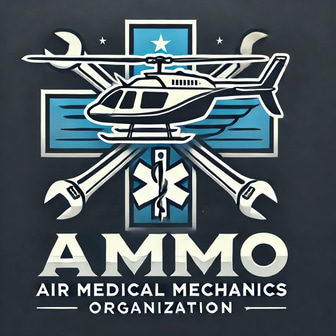Disclaimer: The information provided is for general informational and educational purposes only. Nothing contained herein shall be construed as guidance for, or a basis of, compliance of any regulatory or certification standards. This information must not be used as the sole basis for the certification, inspection, repair, modification, or return to service of any aircraft, product, or component. Users are responsible for consulting appropriate, approved technical data, regulatory authorities, before performing any maintenance, modification, or return-to-service actions.
Safety Management Systems (SMS) References
Safety Management Systems (SMS) are structured frameworks that help aviation organizations identify, assess, and mitigate safety risks. SMS is designed to promote a proactive approach to safety by integrating hazard reporting, risk management, and performance monitoring into daily operations. Mandated by the FAA and aligned with ICAO Annex 19, SMS is essential for air carriers, maintenance organizations, and manufacturers to ensure compliance with regulatory requirements while fostering a strong safety culture.
The FAA's SMS framework emphasizes four key components: Safety Policy, Safety Risk Management (SRM), Safety Assurance, and Safety Promotion. These elements work together to create a data-driven, performance-based approach to aviation safety. SMS applies to all sectors of aviation, including operators, maintenance providers, and manufacturers, ensuring continuous improvement in safety practices.
The following categorized references provide essential guidance on SMS regulations, implementation, and best practices for various stakeholders in the aviation industry
General SMS Guidance
8120.24
Outlines the FAA's oversight and compliance framework for Safety Management Systems (SMS). It provides structured processes for identifying hazards, assessing risks, and implementing safety assurance programs.
8000.369C
Establishes FAA policies and procedures for integrating SMS within internal operations. It emphasizes proactive risk management and performance monitoring to enhance safety outcomes.
8000.373C
Provides implementation guidelines for SMS, focusing on hazard identification, voluntary safety reporting, and data-driven decision-making.
8000.82A
Offers voluntary SMS adoption strategies for aviation service providers. Aligns with ICAO standards and promotes risk-based decision-making and continuous safety improvement.
8000.89 CHG 2
Updates previous SMS guidance with refined oversight processes. Focuses on continuous safety improvement and accountability for operators.
Accident Prevention and Safety Reporting
8040.4C
Defines FAA procedures for accident/incident reporting and investigation. It ensures proper response mechanisms and mitigation strategies.
8110.107B
Covers safety risk assessment methodologies used in aircraft certification services. Provides structured processes for evaluating safety hazards.
SMS Implementation and Compliance
Industry Guidelines for SMS Adoption
AC 00-46F
Provides guidance on the FAA’s Aviation Safety Reporting Program (ASRP). Encourages voluntary reporting of safety concerns while ensuring confidentiality and non-punitive actions.
AC 00-56B CHG 1
Updates accreditation procedures for aviation suppliers, incorporating SMS principles into the Voluntary Industry Distributor Accreditation Program (VIDAP).
AC 00-58C
Discusses best practices for incident reporting and data sharing. Strengthens safety data analysis within SMS frameworks.
Flight Operations and Safety Assurance
AC 120-59B
Provides guidance for Flight Operational Quality Assurance (FOQA) programs. Supports SMS integration into airline operations.
AC 120-66C
Establishes Crew Resource Management (CRM) training standards. Enhances communication, situational awareness, and decision-making in aviation environments.
AC 120-79A CHG 1
Describes voluntary safety programs such as FOQA and Line Operations Safety Audits (LOSA). Aims to integrate these programs into an operator's SMS.
AC 120-90
Details best practices for SMS integration into airline operations. Encourages proactive risk management.
AC 120-92D
Defines FAA’s SMS implementation requirements for air carriers and operators. Ensures alignment with ICAO Annex 19 and risk-based safety assessments.
Certification and Oversight
Operator Certification and Safety Management
AC 121-37B
Establishes qualification requirements for operators within SMS. Focuses on compliance, safety performance, and risk management.
AC 21-43A
Provides certification guidance for aircraft products, parts, and modifications. Encourages SMS integration in production and design.
AC 21-58
Covers safety assurance practices for manufacturers and suppliers. Reinforces SMS adoption in production environments.
AC 23.1309-1E
Establishes safety risk assessment requirements for avionics and aircraft system designs. Ensures risk-mitigation through SMS frameworks.
AC 91-32B Ed Update 2
Updates regulatory guidance for maintenance and inspection programs. Reinforces compliance with SMS-based risk assessment.
Surveillance and Regulatory Oversight
VS 8000.370C
Defines FAA surveillance policies for assessing SMS effectiveness. Implements data-driven risk assessment for aviation operators.
VS 8000.375
Provides FAA guidelines for inspector procedures. Focuses on SMS data collection, compliance verification, and safety risk analysis.
© 2024. All rights reserved.
Disclaimer: The information provided by the Air Medical Mechanics Organization (AMMO) is for general informational and educational purposes only. It has not been reviewed, approved, or accepted by the Federal Aviation Administration (FAA), any Organization Designation Authorization (ODA) holder, Type Certificate (TC) holder, Supplemental Type Certificate (STC) holder, or any aircraft or component manufacturer.
Nothing contained herein shall be construed as guidance for, or a basis of, compliance with FAA regulations, manufacturer-approved data, type certificate or supplemental type certificate requirements, or any other regulatory or certification standards. This information must not be used as the sole basis for the certification, inspection, repair, modification, or return to service of any aircraft, product, or component.
Users are responsible for consulting appropriate, approved technical data, regulatory authorities, and manufacturer guidelines before performing any maintenance, modification, or return-to-service actions. AMMO assumes no liability for the use or misuse of any information provided
